Yes, I collect old clocks, among my other obsessions—but they are not just objects of art. I find antique clocks comforting; their gentle ticking and chiming are agreeable reminders of the passage of time. Here I’ll share basic aspects of clock care that keep things running smoothly.
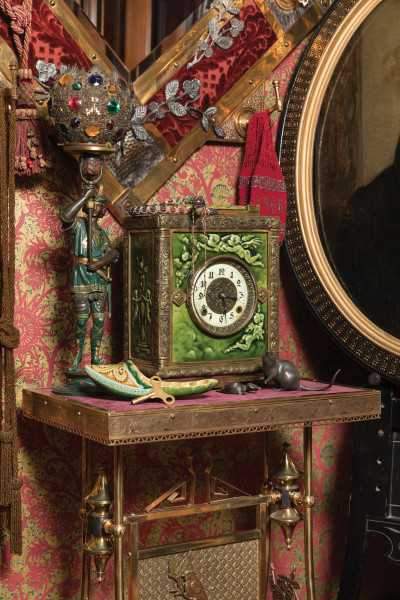
A Low Art Tile clock, ca. 1880, keeps time on a brass hall table of the period.
William Wright
The placement of an antique clock is critical. Heat, direct sunlight, and humidity quickly take their toll both on the case—bleaching wood and drying any veneer—and the mechanisms. A common mistake is to place a clock on a mantel directly over a working fireplace, where heat and smoke will cause damage; too close to a window or a radiator causes problems as well. Cigarette, pipe, and cigar smoke damage clock movements.
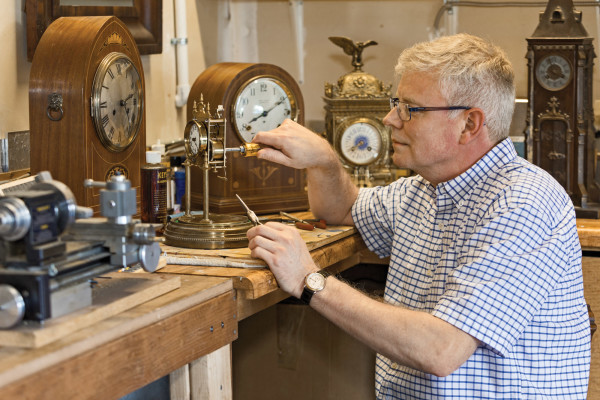
Clock restorer Craig Kerr works on an early German anniversary clock, ca. 1905, with a disc pendulum.
William Wright
Make sure the clock is securely held in position, as any movement will throw off the balance. Don’t hang your wall clock from a nail or string, but rather use wall bolts. Remember to secure the bottom, as opening the door and winding will cause the clock to move. Screwing a long case or wall clock to the wall stud (or using a molly bolt if a stud isn’t available) helps keep it secure and running smoothly.
A clock that uses a pendulum must be level to function; you can tell it’s running properly when you hear an even gap between each tick and tock. Otherwise, the clock verge may not clear the escape wheel teeth as the pendulum swings, and the clock could stop. Use a level to get it “in beat.” For small adjustments, a shim may be used for shelf and tall-case (grandfather) clocks; coins and washers sometimes do the trick. If a significant tilt is required to get an even beat, this usually means an adjustment in the suspension is needed. That’s work for a professional.
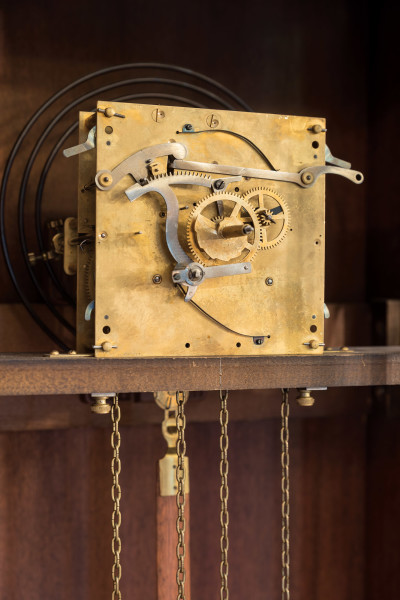
The rack-and-snail striking mechanism comes from an eight-day German tall-case clock, ca. 1930.
William Wright
Avoid areas with a lot of vibration such as loose floorboards when placing a tall clock. The vibration may cause the weights to slowly swing, counteracting the movement of the pendulum and making the clock stop.
If your clock starts slowing down after running well, or if the strike becomes sluggish, stop the clock and have it looked at by a repairman. Don’t put off maintenance! Basic upkeep means having the clock oiled every three years, and completely cleaned every 10 years. This involves disassembling the movement, cleaning the parts, and evaluating everything for wear. Cracked mainsprings may need replacing, worn pivot holes in the movement plates may need bushings installed, and gear pivots can be polished on a lathe. Be prepared to pay between $200 and $350 for a clock overhaul.
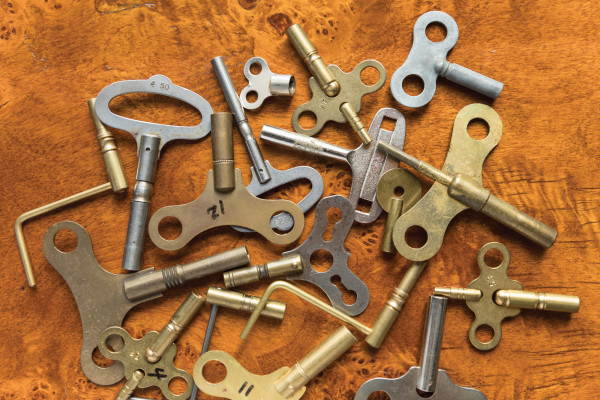
Spare keys each await the right clock.
William Wright
The secret to keeping an antique clock working is to keep it running and not let it stay idle, as the mechanism will dry out and the clock will be harder to repair. Wind firmly to the point of resistance: the key will stop when the clock is fully wound. An eight-day clock should be wound once a week, as the mainspring loses power after seven days. A 30-hour clock should be wound daily; a good routine is to wind it every night before bedtime. The key should fit tightly. If it is loose, slipping can occur during winding and the ratchets will not seat properly, potentially causing a sudden unwinding of the mainsprings.
Adjusting the time is straightforward. Lengthening the pendulum slows down the clock; shortening it makes the clock run faster. Remember to always turn the hands clockwise, never counterclockwise, to set the time, so as not to bend or break strike-mechanism levers.
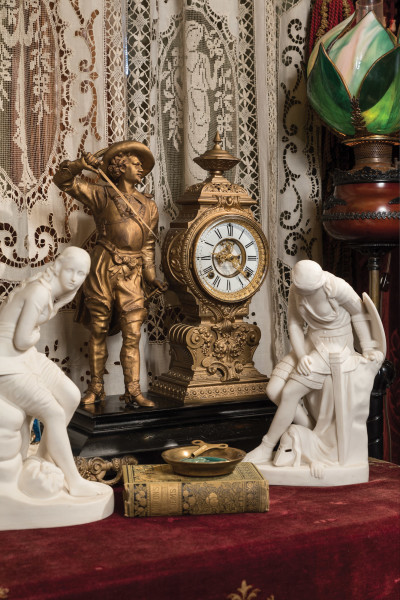
An American figural clock, by Ansonia, ca. 1880, includes a musketeer. Flanking it are Parian-ware figures.
William Wright
Myths & Clocks
Four common myths about old clocks, and the truth behind each.
1. You must not overwind the clock. Winding a clock spring all the way does not damage it! If a clock stops when it is fully wound, look for a lubrication or wear problem.
2. Mechanical clocks are very accurate. While most weight- and spring-driven mechanical clocks keep time within a minute or two a day, don’t expect split-second accuracy as you would get with a modern quartz movement. Spring-driven clocks lose power (and time) as the spring unwinds; fluctuations in temperature can cause the movements to expand and contract, affecting timekeeping.
3. Buy only American. Well, American clocks manufactured prior to WWII were not as well made as those from France, Germany, and Austria. European clocks had higher-quality movements and require fewer repairs today than clocks cheaply produced in the U.S. and Japan.
4. Just give it some WD-40. No, this lubricant is not your clock’s friend! Never spray the mechanisms with WD-40 as that will attract dust, ruin the cleaning solution used for its maintenance, and make cleaning and repairs more costly.
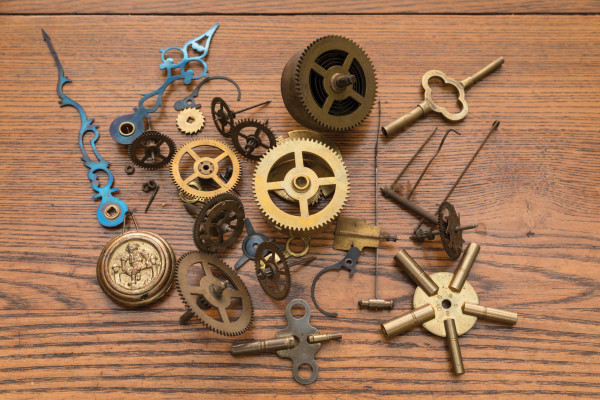
A collection of spare parts includes gears, keys, pendulums, and hands.
William Wright
When Buying an Old Clock
The vintage-clock market is pretty big. Keep in mind these shopping pointers:
- Wind the clock to be sure it runs and chimes correctly. Move the minute hand slowly to the hour and half hour dial positions for chiming.
- Make sure all the case and movement parts are present. Missing pendulums and weights may be hard to find, and replacement parts may devalue the clock.
- Beware of fakes! Some rare clocks, such as the French industrial clocks of the 1880s and 1890s, are being reproduced in China. They don’t have the value (or quality) of the originals.
- Find out when the clock was last serviced; if the seller doesn’t know, then don’t run the clock until it has been serviced. Cracks and tears can occur in the mainsprings, causing them to break when wound. A sudden mainspring break can destroy gear teeth and damage the movement, and you end up with a repair bill greater than the cost of the clock.
- Make sure the dealer has a return policy. If the clock turns out to need expensive repairs or is not as advertised, you may want to return it.







